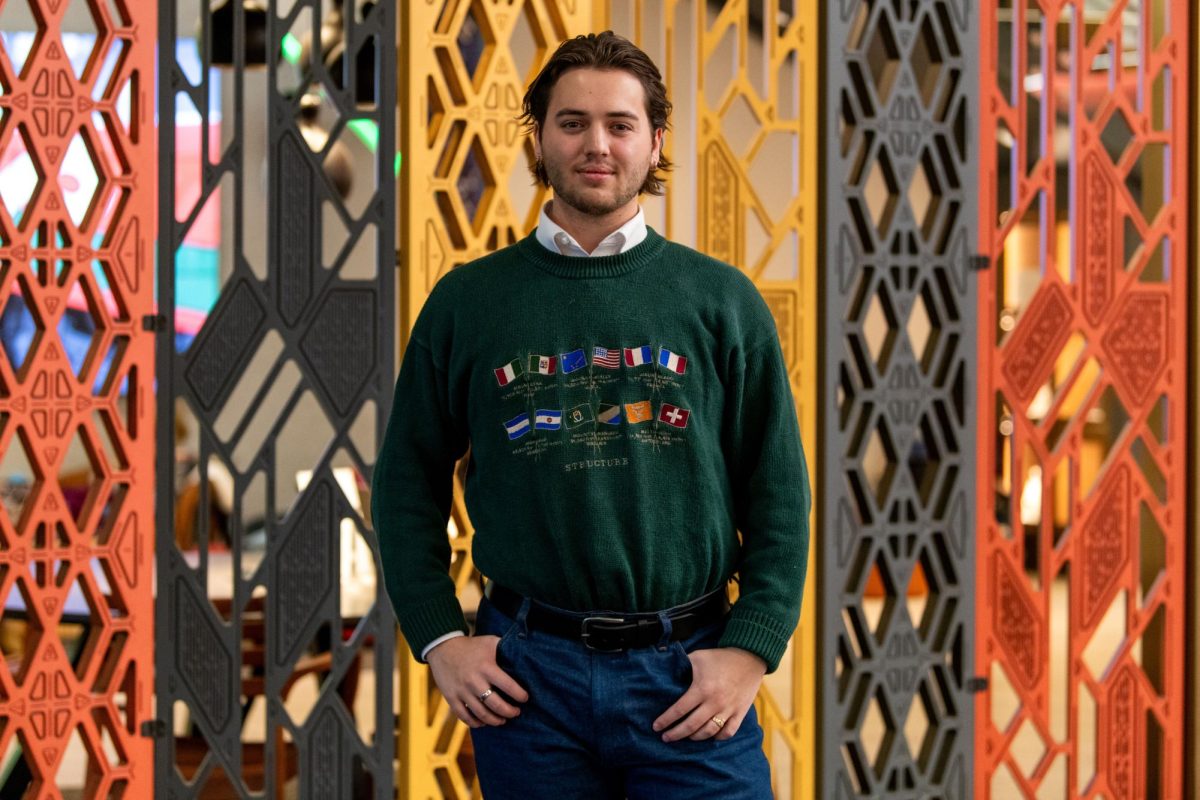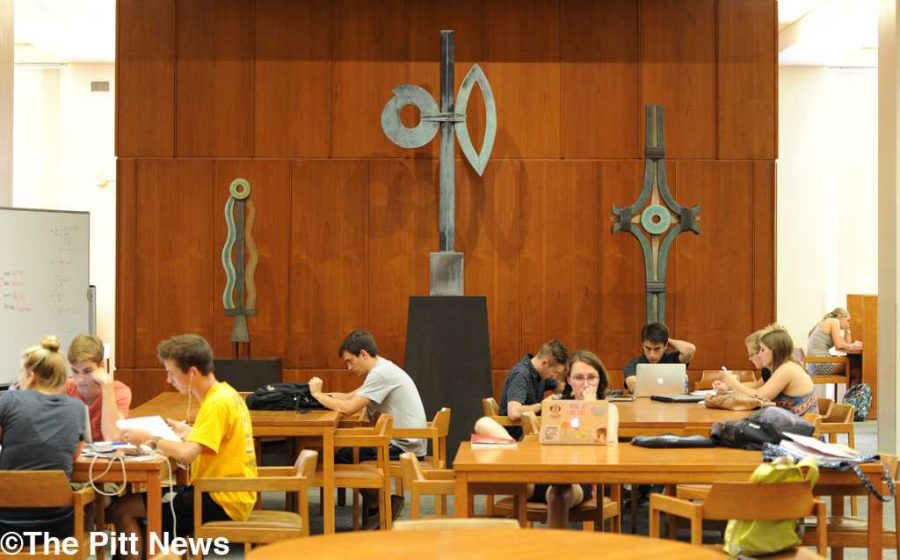Pittsburgh now has another reason to thank the late philanthropist and political activist Elsie Hillman: she brought the “Emerald City” to the Steel City.
Over the summer, the Pittsburgh nonprofit Hillman Foundation donated a collection of abstract statues, entitled “Emerald City,” to the Hillman Library. The statues, which resemble an assortment of turquoise towers with one or two wide-open eyes, were created by New York animist sculptor Jeffrey Maron.
Maron originally showcased the statues, which stand several feet tall, in 2012 as part of a 35-piece exhibition called “Devotion” in New York. William Hillman, a fan of Maron and son of Elsie Hillman, curated the exhibition. Together, he and Maron named the collection “Emerald City.”
Maron met the Hillman family in the ’80s when an art dealer sent William Hillman, who is also an artist and collector, to Maron’s studio. According to Maron, Elsie Hillman suggested the statues stay together after the exhibition ended and gifted them to the library .
“When Mrs. Hillman saw the grouping she was very taken with it,” Maron said in an email. “[She] has always been an inspiration to me and the installation is dedicated in her memory.”
The sculptures’ organic appearances reflect Maron’s animist style, which is “the worship of an inclusive natural order,” according to his website. He spent two years working in Japan on a Fulbright-Hays Grant for sculpting, where he “continued to be influenced by cultures of the world dedicated to animism.”
The three-part collection reunited in the library on July 28, forming the collective “Emerald City” on the first floor. Before their reunion, Maron, William Hillman and Elsie Hillman separately owned the three pieces named “Heartsong,” “Open Form” and “Luz,” respectively.
The collection is just one of the Hillman family’s many gifts to the University. The library, which was built on land also donated by the Hillman Foundation in the early ’60s, is named after the Hillman family for their political and philanthropic contributions to both the city and the University of Pittsburgh. The foundation also arranged for Pitt to borrow pieces of art from the Carnegie Museum of Art, which the library and other parts of campus host.
“Emerald City” is Maron’s third piece of public work on display in Pittsburgh. The other two are “Spirits’ Flight,” a dreamy flower-like sculpture in the Hillman Cancer Center and an abstract imagining of Pittsburgh’s history, titled “Pittsburgh Haiku,” which hangs in the Hartwell Building in Shadyside.
The library’s Director of Development Julie Seavy coordinated the installation with Maron and the Hillmans, calling it a “stunning addition to the first floor.” Seavy arranged the collection, which now stands together against the wall in the left study room.
“There’s a great view from the second floor,” Seavey said, noting that most students might not think to look down on the work.
Jeff Wisniewski, web services and communications librarian for the Hillman Library, said one of the statues’ most impressive qualities is how well they blend in with the existing architecture of the building.
“The colors, the patina on the metal just works with the wood that’s behind [them] and with the general pallet in the building,” he said. “Despite the fact that they’re so big and dramatic-looking, they feel like an integral part of the building.”
“Emerald City” has a soothing quality, Maron said, that makes it ideal for a place as quiet and meditative as a library.
“I hope they offer a moment of contemplation for those involved with improving their minds,” he said. “Just a look up or by that captures the viewer for that moment, when the art tells its story and the viewer finds that empathic moment.”



